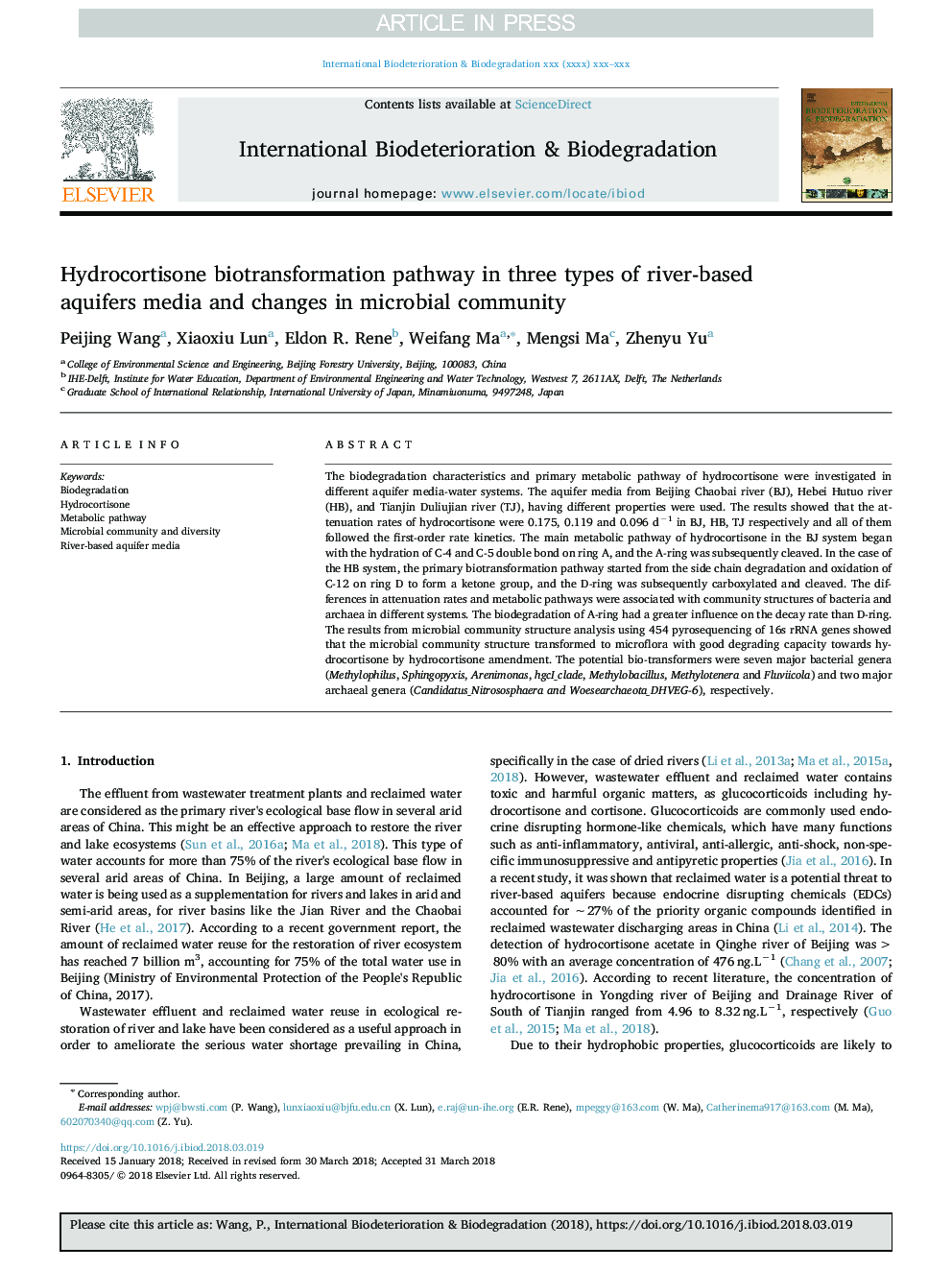| Article ID | Journal | Published Year | Pages | File Type |
|---|---|---|---|---|
| 8843812 | International Biodeterioration & Biodegradation | 2018 | 8 Pages |
Abstract
The biodegradation characteristics and primary metabolic pathway of hydrocortisone were investigated in different aquifer media-water systems. The aquifer media from Beijing Chaobai river (BJ), Hebei Hutuo river (HB), and Tianjin Duliujian river (TJ), having different properties were used. The results showed that the attenuation rates of hydrocortisone were 0.175, 0.119 and 0.096 dâ1 in BJ, HB, TJ respectively and all of them followed the first-order rate kinetics. The main metabolic pathway of hydrocortisone in the BJ system began with the hydration of C-4 and C-5 double bond on ring A, and the A-ring was subsequently cleaved. In the case of the HB system, the primary biotransformation pathway started from the side chain degradation and oxidation of C-12 on ring D to form a ketone group, and the D-ring was subsequently carboxylated and cleaved. The differences in attenuation rates and metabolic pathways were associated with community structures of bacteria and archaea in different systems. The biodegradation of A-ring had a greater influence on the decay rate than D-ring. The results from microbial community structure analysis using 454 pyrosequencing of 16s rRNA genes showed that the microbial community structure transformed to microflora with good degrading capacity towards hydrocortisone by hydrocortisone amendment. The potential bio-transformers were seven major bacterial genera (Methylophilus, Sphingopyxis, Arenimonas, hgcI_clade, Methylobacillus, Methylotenera and Fluviicola) and two major archaeal genera (Candidatus_Nitrososphaera and Woesearchaeota_DHVEG-6), respectively.
Related Topics
Life Sciences
Environmental Science
Environmental Science (General)
Authors
Peijing Wang, Xiaoxiu Lun, Eldon R. Rene, Weifang Ma, Mengsi Ma, Zhenyu Yu,
